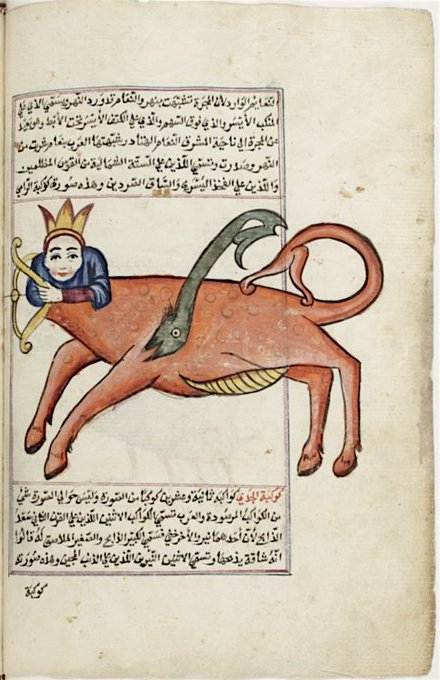Sagittarius in an 18thC copy of "Wonders of Creation' by al-Qazwīnī (Arabe 2178) #Mandragore @laBnF.
Urania, the muse of Astronomy, by French artist Eustache Le Sueur (1616-55) @MuseeLouvre https://t.co/WvAtRWc78d
North African brass astrolabe (unsigned) with 25 star markers; labeled in Arabic, c. 1750 @AdlerPlanet https://t.co/fwh6kdc9VK
The Horizon of Katip Celebi’s Thought - @HeritageMuslim https://t.co/nqpHlLTNGC
"Starry Night" (1979) by Peruvian artist Fernando de Szyszlo (b. 1925); acrylic and charcoal on paper @museomaclima.
The planets & signs of zodiac send down their influence onto the body of a man, French?, 17thC @wellcomeimages.
The comet of January 1681 as seen by spectators in Alkmaar, the Netherlands @rijksmuseum https://t.co/fNpznjUs4a
"Under the Moon" by Ben Shoemaker, Quapaw/Shawnee/Cherokee, born 1945 @HFJMuseum https://t.co/5sdMlIDPA4
"Telescope with its Bag" by Ryūryūkyo Shinsai (Japanese, active c.1799–1823) @metmuseum https://t.co/PvhNwtDO0i
Astrolabe made by Muhammad ibn al-Fattuh al-Khama'iri, 1236/7, Seville, Spain; 24 star markers @AdlerPlanet.

















